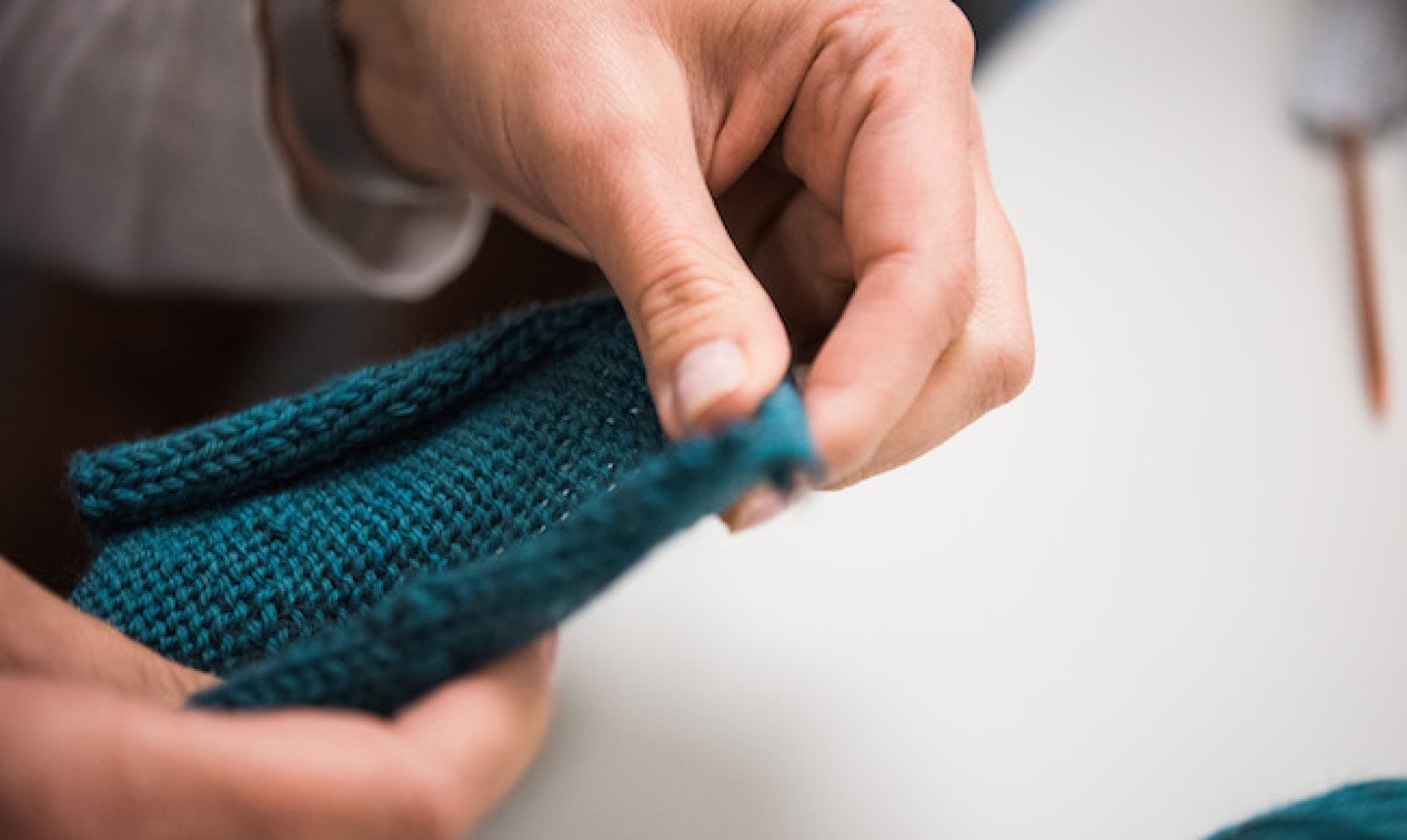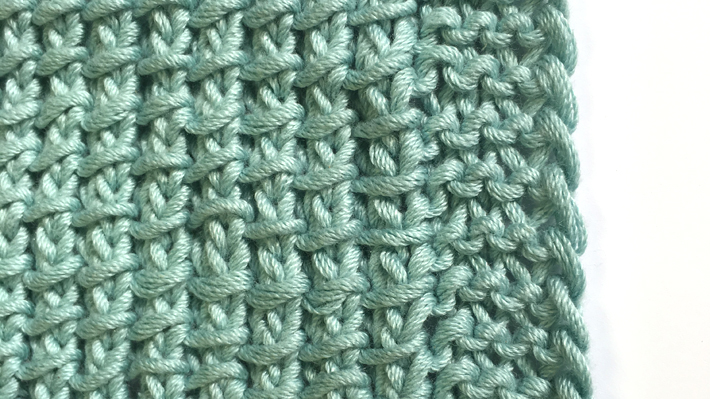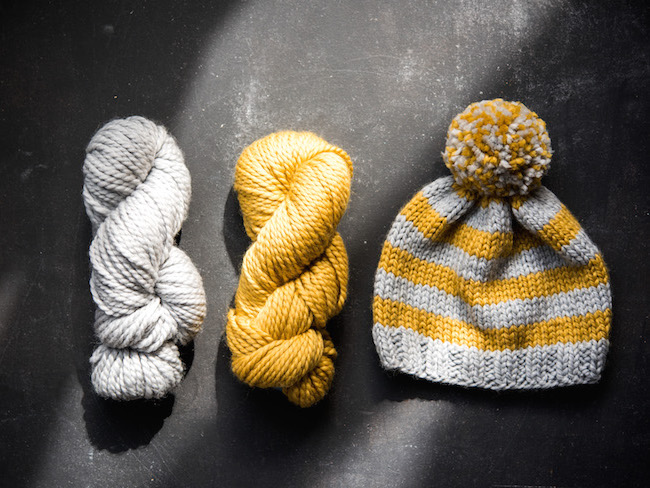Whether you are a beginner or an expert, if you are a knitter, you are always learning something new. As a self-taught knitter, I experienced a lot of the frustrations that can come with the fun of learning to knit. Why does stockinette curl? Why is the edge messy? Over the years, I’ve picked up some tips that I’d like to pass on to make your knitting journey a little smoother.
Here are some knitting tips and tricks to save time and add fun.
1. Use circular needles even when you’re knitting flat.

I’ve lost a lot of straight needles over the years. When I wasn’t looking, the needle not attached to my knitting would leap out of my knitting bag and escape through some portal under the nearest piece of furniture, never to be seen again.
Then I discovered that I could use circular needles for flat projects by knitting back and forth in the round. The cable connecting the needles kept them from separating. So long, straight needles!
But there are a lot more reasons to use circular needles for flat projects…
- Circular needles are more portable. The short needles and flexible cable make it easy to bundle up your project in your purse or bag.
- It’s easier to handle a lot of stitches on circular needles because the length of the cable can be longer than a pair of straight knitting needles combined.
- You reduce the risk of dropping stitches if you stop in the middle of a row. Just push both sides of the work to the middle of the cable and you won’t have to worry about stitches slipping off the ends of the needles if you don’t have point protectors.
2. The crochet hook is a knitter’s best friend.
Even if you are the most die-hard knitter, you’ll discover that a crochet hook is an indispensable knitting tool. Here’s why:
Fix accidentally dropped stitches

Photo via Stefanie Japel
If you drop a stitch, you don’t have to rip back your work, even if it has laddered several rows down. Just insert the crochet hook in the work, hook the next rung of the ladder and pull it through the loop of the dropped stitch. For a step-by-step tutorial, watch it in action in the class Save Our Stitches: Fixing Knitting Mistakes.
Picking up stitches to knit
When your pattern calls for picking up stitches to complete a neckline or other part of the project, a crochet hook can be easier to handle than a knitting needle. Instead of trying to coax the yarn through a stitch on a slippery, straight knitting needle, just slip the crochet hook through the stitch, snag the new yarn strand below, pull it through the stitch and then transfer it to the knitting needle.
Adding fringe
Use a crochet hook to thread and knot strands yarn through your knitting to add fashion and flare like Knitca did with her Fringed Wrap pattern.
3. Stockinette curls and it’s not your fault.

It’s maddening! You’re knitting a simple piece of stockinette and it starts to roll up at the bottom and curl in at the sides. When it happened to me, I was sure I was doing something wrong. I found out that it’s caused by the nature of the stitch itself and can be prevented with simple changes like adding a border.
4. Create a neat edge with an easy chain slip stitch.
I said “goodbye” to nubby garter stitch edges forever the minute I knit my first slipped stitch chain edge. As you can see in the bamboo stitch swatch below, the slipped chain creates an attractive braid-like edge along the right side.

There are several ways to do a chain edge, but this is the easiest way I’ve found.
1. At the end of every row, slip the last stitch with the yarn in front.
2. At the beginning of the next row, knit the slipped stitch.
This has become such a habit for me that I do it automatically and it feels wrong to knit any other way.
5. Match the stitch to the yarn.

From Susan B. Anderson’s Startup Library: Knitting class[/caption]
When I first started knitting I would fall for every bouclé, ribbon or fuzzy-soft yarn I saw. But when I got them home, I soon learned they would make a mess of the cables, lace, or other special stitch patterns I wanted to try. Textured yarn works best with simple stitches like stockinette and garter, while a textured stitch works best with a simple high-ply twisted yarn. When you’re knitting — especially when you try a new technique — there will be projects that don’t quite turn out the way you envisioned them. One novice knitter told me that she just threw those projects out and bought new yarn. Although we all love an excuse to buy new yarn, there are better ways to rescue failed experiments including re-using the yarn in a new project.6. Recycle or upcycle your practice projects.
Do you have any tips to add to this list? Leave them in the comments!

There are many different ways to hold your yarn. Search for tutorials that show different ways and adopt the one that feels best for you (some feel awkward at first). A soft steady hold on your yarn makes all the difference for even tension as you knit.